What is Tire Cupping?
Tire cupping, also known as tire scalloping or tire feathering, is a condition in which irregular wear patterns form on the surface of a tire. This type of wear commonly appears in patches around the tire’s circumference, resulting in an uneven and noisy ride. Possible causes include tire inflation, wheel misalignment, worn suspension components, or tire issues. It’s important to find and fix the reasons for tire cupping to keep your vehicle safe and running well. This article discusses tire cupping, including its causes, symptoms, and solutions, to assist car owners in understanding and addressing this common issue.
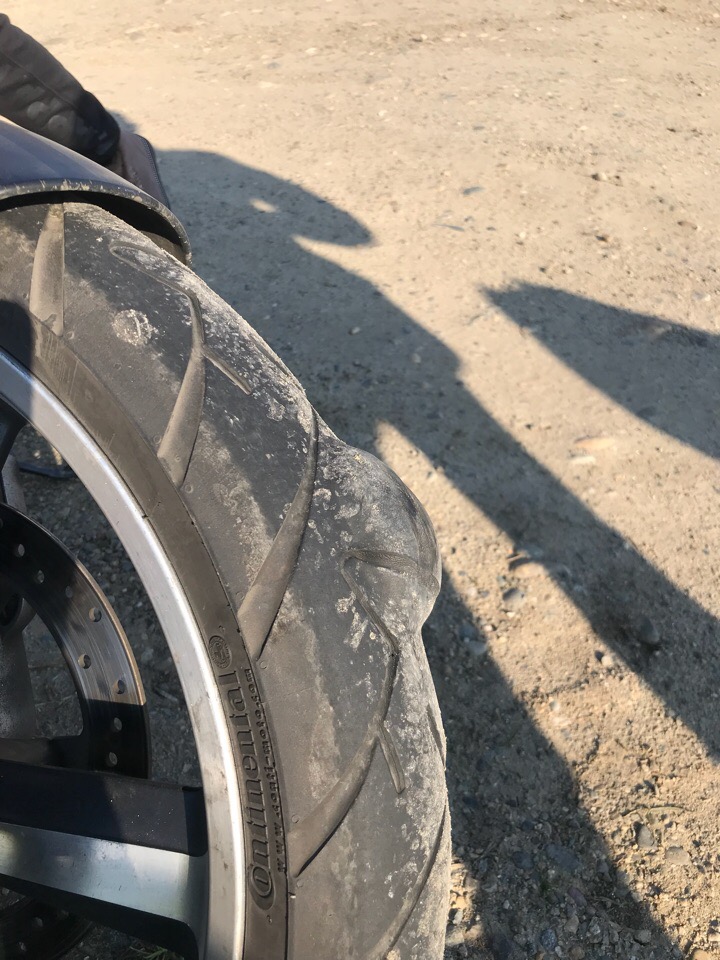
Signs of Tire Cupping
The symptoms of tire cupping can include tire noise, vibrating or shaking, and a vehicle pulling to one side. Visual signs of tire cupping include uneven wear patterns on the tire, which may appear as dips or scalloped edges. These symptoms indicate that the tire is not evenly meeting the road surface, leading to irregular wear patterns.
The potential causes of tire cupping can be attributed to unbalanced or misaligned tires. Unbalanced tires can result in uneven wear, causing cupping over time. Similarly, misaligned tires can lead to uneven contact with the road surface, resulting in cupping as well. It is important to have the tires and suspension checked by a professional to identify and address the cause of cupping. Correcting any issues with tire balance and alignment can help prevent future cupping and ensure even tire wear, improving the overall performance and safety of the vehicle.
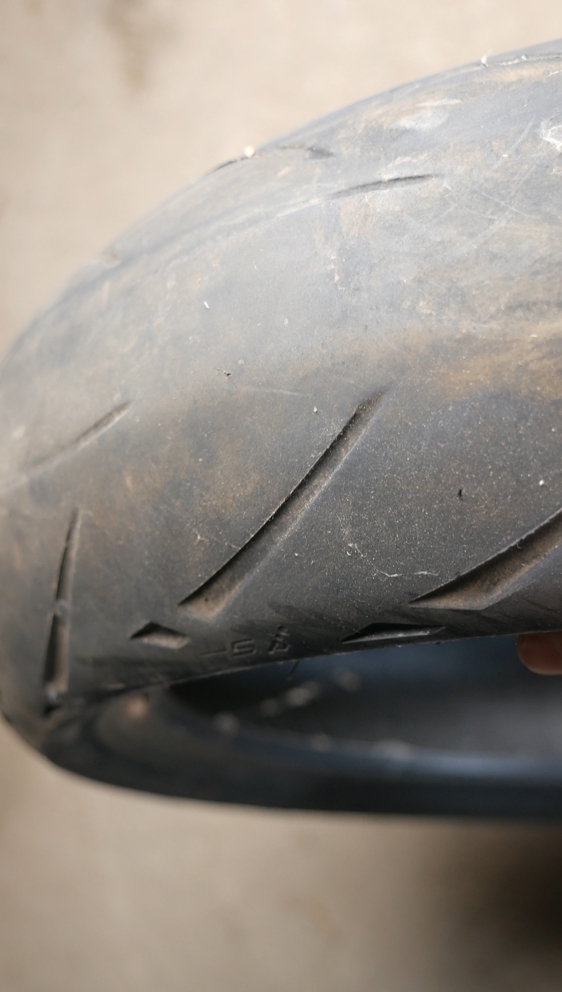
In conclusion, tire cupping can lead to noticeable symptoms such as tire noise, vibration, and vehicle pulling. The potential causes of cupping, such as unbalanced or misaligned tires, emphasize the importance of having the tires and suspension checked by a professional to prevent further damage and ensure a smoother, safer ride.
Factors that Cause Motorcycle Tire Cupping
Motorcycle tire cupping can be caused by a variety of factors, leading to uneven wear patterns and potentially dangerous handling. Factors such as improper tire inflation, poor wheel alignment, aggressive riding, and worn out suspension components can all contribute to cupping. Understanding the causes of this issue can help riders take proactive steps to prevent cupping and ensure the safety and longevity of their tires.
Worn Shock Absorbers or Suspension Components
Worn shock absorbers or suspension components can exhibit several signs that indicate the need for inspection and potential replacement. Abnormal tire hopping and bouncing during performance are common indicators of worn shock absorbers or suspension components. When these parts wear out, they are no longer able to effectively dampen the vibrations and impacts from the road, leading to a bouncy and uncomfortable ride. Additionally, worn suspension components can cause uneven tire wear, as the tires may not stay in proper contact with the road surface.
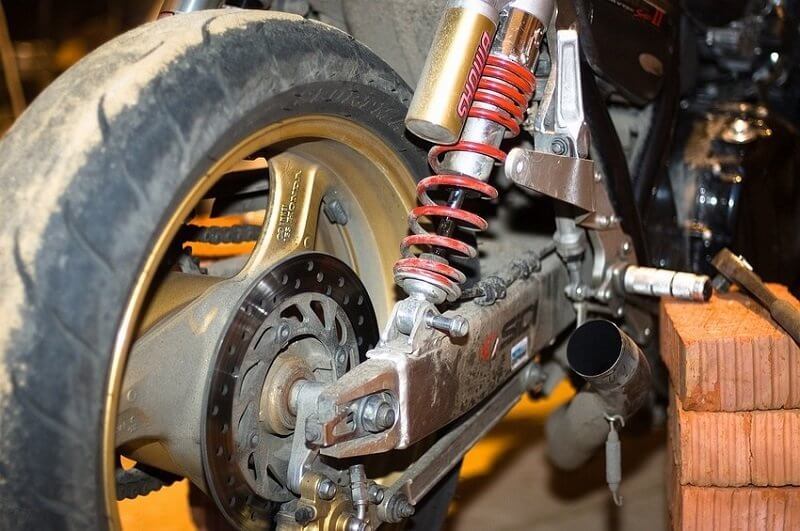
To inspect these components for wear, it is important to check the shock absorbers, bushings, struts, and other parts for signs of damage or deterioration. This can include looking for leaks, cracks, or excessive wear. It is essential to replace worn shock absorbers or suspension components before uneven tire wear occurs in order to maintain the safety and performance of the vehicle. Ignoring these signs can lead to reduced stability, decreased handling, and increased risk of accidents. Regular inspections and timely replacement of worn components can help ensure a smooth and safe driving experience and prevent premature tire wear.
Unbalanced or Misaligned Tires
Restore balance to your ride! Visit a tire shop to rejuvenate your tires, ensuring smooth sailing on the open road. Start by having a technician inspect the tires to determine if they are misaligned or experiencing runout. This will help determine if the tires require balancing, alignment, or a combination of both.
After verifying the issue, the technician should correct any misalignment or imbalance in the tires. Balancing the tires evenly distributes weight, while alignment adjusts tire angles to prevent uneven wear. Addressing imbalance or misalignment issues promptly is important to avoid problems like cupping and premature wear.
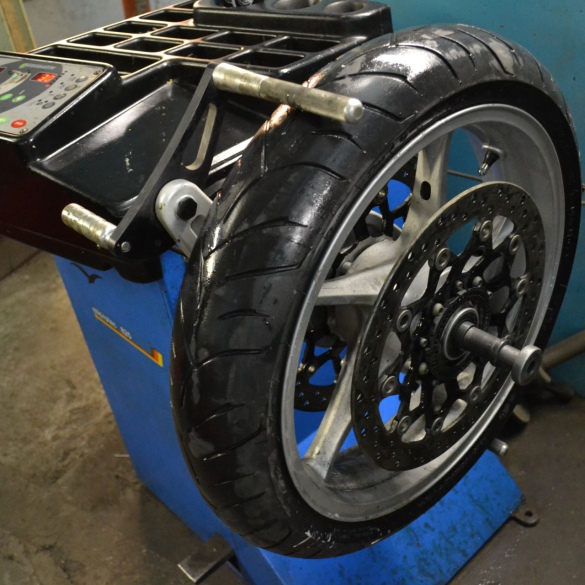
Fixing tire issues at a shop ensures your tires work well and last longer. This preventative maintenance will also enhance safety and performance while driving.
Inadequate Air Pressure
Regular checks using a tire pressure gauge are necessary to maintain proper tire pressure. This can be done either at home or at a gas station using an air pump. If the pressure is too low, adjust it as necessary to ensure the tires are properly inflated. Incorrect air pressure in tires can result in uneven wear and impact handling and safety due to improper contact patches.
Proper tire inflation is important for performance and safety. You can find this information in the owner’s manual, on a sticker inside the driver’s side door frame, or on the tire.
Check and adjust tire pressures regularly to ensure even wear, extend tire life, and maintain good handling and performance. This task is easy but important for safety and vehicle performance.

Uneven Wear Pattern on the Tread Surface
Uneven wear patterns on the tread surface of tires can indicate specific issues with alignment, inflation, or suspension. These patterns include center wear, shoulder wear, cupping, feathering, and patchy wear.
Over inflation can cause center wear because it reduces the contact patch with the road. Under inflation can cause shoulder wear on the tires.
Cupping can occur from worn suspension or tire imbalance, resulting in uneven wear on the tire. Feathering, a condition where the tread ribs become rounded on one edge and sharp on the other, may suggest a combination of alignment and suspension problems.
Random patches of uneven tread wear can be caused by misalignment, improper inflation, or worn suspension components.
Fixing alignment, maintaining inflation, and replacing worn suspension parts can prevent more wear and prolong tire life.
Incorrectly Selected Radial Tires for the Application
When selecting radial tires for a specific application, there are several important factors to consider. Firstly, tire quality is crucial in ensuring optimal performance and longevity. It is essential to choose reputable brands known for producing high-quality radial tires. Secondly, the tread pattern and depth should be suited to the intended application, whether it be for off-road, highway, or urban driving. Different tread designs provide varying levels of traction, handling, and durability. Additionally, the tire compound plays a vital role in determining the tire’s performance characteristics, such as grip, wear resistance, and fuel efficiency. It is important to select a tire compound that aligns with the demands of the intended application.
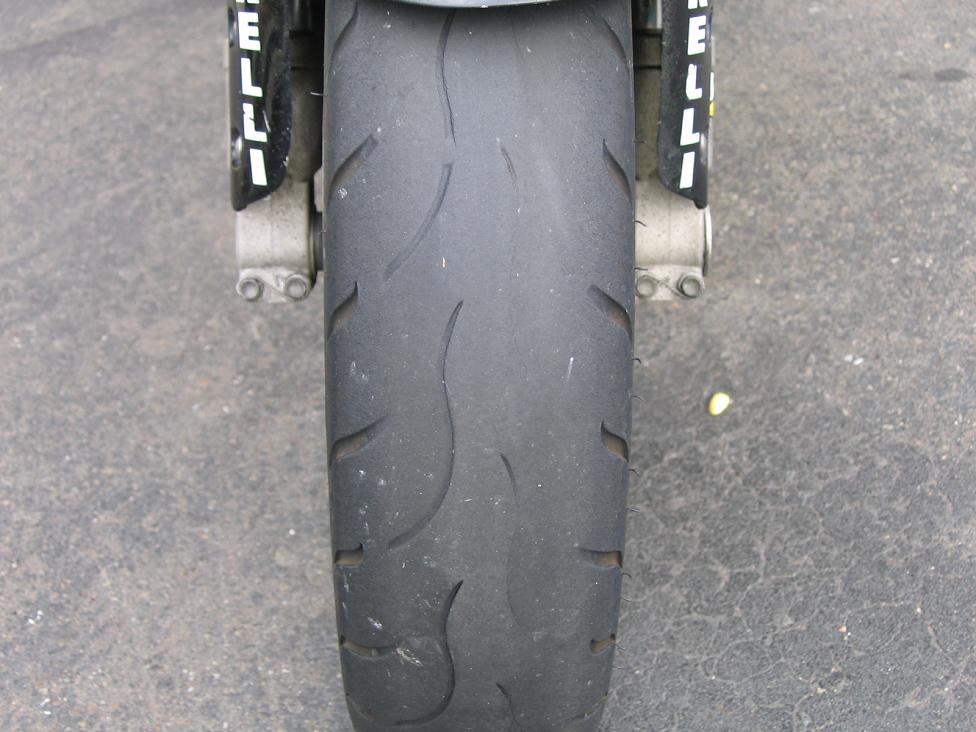
To avoid tire cupping and irregular wear, it is essential to choose the appropriate tires based on the vehicle’s usage. Incorrectly selecting tires that are not suited for the application, such as using off-road tires for highway driving, can lead to uneven wear patterns and reduced tire lifespan. Additionally, ensuring proper tire inflation, wheel alignment, and regular tire rotations can also help prevent tire cupping and irregular wear.
In conclusion, when selecting radial tires for a specific application, it is important to consider factors such as tire quality, tread, compounds, and to ensure they are appropriate for the intended use to avoid tire cupping and irregular wear.
Preventing Tire Cupping on Motorcycles
Tire cupping, also known as scalloping or irregular wear, is a common issue that can affect motorcycle tires. This type of wear can lead to decreased performance, reduced traction, and an uncomfortable ride. Preventing tire cupping is essential for maintaining the safety and longevity of your motorcycle tires. By understanding the causes of tire cupping and implementing preventive measures, you can minimize the risk of this issue and keep your motorcycle tires in excellent condition.
Regularly Inspect for Signs of Cupping and Uneven Wear
Check your tires regularly for any signs of wear or uneven tread to ensure safe and smooth driving. Check for worn tread, listen for tire noise, and feel for vibrating or shaking while driving. It’s important to see a trusted professional if you notice these signs.
Cupping wear and uneven tread can be caused by multiple factors, including wheel alignment, suspension wear, and tire issues. Not heeding these signs can result in reduced traction, compromised handling, and possible safety risks while driving. A professional inspection will find the problem and fix it.
By regularly inspecting your tires and being mindful of signs of cupping wear and uneven tread wear, you can help prolong the lifespan of your tires and maintain a safe driving experience for yourself and others on the road.
Check Tire Pressure and Adjust as Needed
To check tire pressure and adjust as needed, start by gathering a tire pressure gauge. To check the tire pressure, take off the valve caps from each tire and firmly attach the tire pressure gauge to the valve stem for an accurate reading. Please compare the measured pressure with the recommended pressure stated in the vehicle’s manual. Use an air compressor to inflate the tire to the right pressure if it is too low. If the pressure is too high, release some air using the pressure gauge.
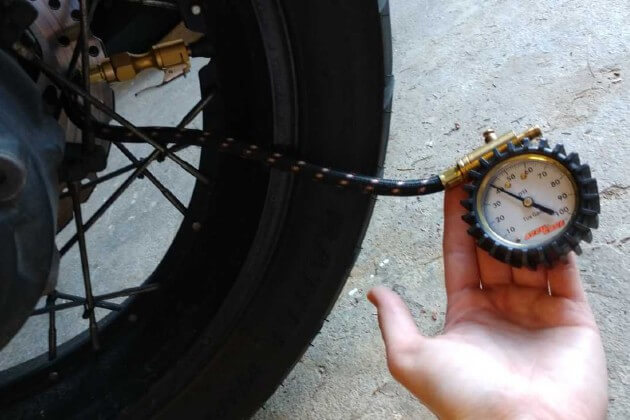
Check tire pressure regularly for safety on the road and longer tire life. Inflated tires help save gas, handle better, and prevent tire problems. Keeping your tires properly inflated can contribute to improved safety and performance of your vehicle. Check tire pressure once a month and before long trips in all four tires, including the spare. Follow this routine for better driving and longer lasting tires.
Replace Worn Shock Absorbers and Suspension Components
It appears that the shock absorbers, struts, and bushings on your vehicle are worn and in need of replacement. These worn suspension components can lead to uneven tire wear and bounce during performance, affecting the overall handling and safety of the vehicle.
The shock absorbers, in particular, play a crucial role in maintaining tire contact with the road surface, ensuring stability and control. When worn, they can result in bouncing and decreased handling, especially during cornering and braking. Additionally, worn bushings and struts can contribute to a noisy, uncomfortable ride and further compromise the vehicle’s stability.
To address these issues and prevent further damage, it is essential to replace the worn shock absorbers and suspension components promptly. By doing so, you can restore the vehicle’s handling, prevent uneven tire wear, and improve overall ride comfort and safety.
It is important to have a professional mechanic inspect these components and recommend the appropriate replacements. By taking action now, you can avoid potential safety hazards and costly repairs in the future.
Make Sure the Right Type of Radial Tires are Being Used
Consider specific requirements when choosing radial tires for your motorcycle. The tire compound needs to have good mileage and grip for longevity and traction. Additionally, the tire tread should effectively evacuate water and provide good grip on wet surfaces. Bias-ply construction is crucial for motorcycle tires, as it ensures load-carrying capacity and a smooth ride.
Performance radials offer significant benefits for large cruisers. These tires are made for heavy bikes and give better stability, handling, and performance. Adding silica to performance tires improves grip on wet and dry roads, making them safer and easier to control.
To ensure optimal performance and safety on the road, make sure your motorcycle’s radial tires meet specific requirements.
How to Repair a Cupped Motorcycle Tire
Riding a motorcycle with a cupped tire can be a bumpy and noisy experience. Cupping occurs when uneven wear patterns form on the tire, causing it to have a scalloped or cupped appearance. Not only does this affect the ride quality, but it can also impact the handling and safety of the motorcycle. In this guide, we will discuss how to diagnose and repair a cupped motorcycle tire to improve ride comfort and ensure a safer and smoother ride.
Have an Experienced Technician Balance and Align Tires Properly
It is important to have an experienced technician properly balance and align your tires to ensure proper tread wear and safe riding.
Tire balance is important for maintaining even tread wear and safe driving conditions. An experienced technician can make sure that the weight of the tire and wheel assembly is evenly distributed, which helps to prevent premature wear on the tread.
Proper tire alignment is also important for tread wear and safety. Improper alignment can cause various tread wear patterns, such over-inflation, under-inflation, feathering, scalloping, and outer-edge or inner-edge wear. A skilled technician can fix these problems to keep your tires safe.
It’s important to have an experienced technician assess and adjust factors like bushings, springs, and loads that can impact tire alignment for proper alignment.
To maintain tire wear and drive safely, get an experienced technician to balance and align your tires. Ensure the longevity of your tires and stay road-safe with the help of a skilled professional who will pamper them with regular maintenance.
